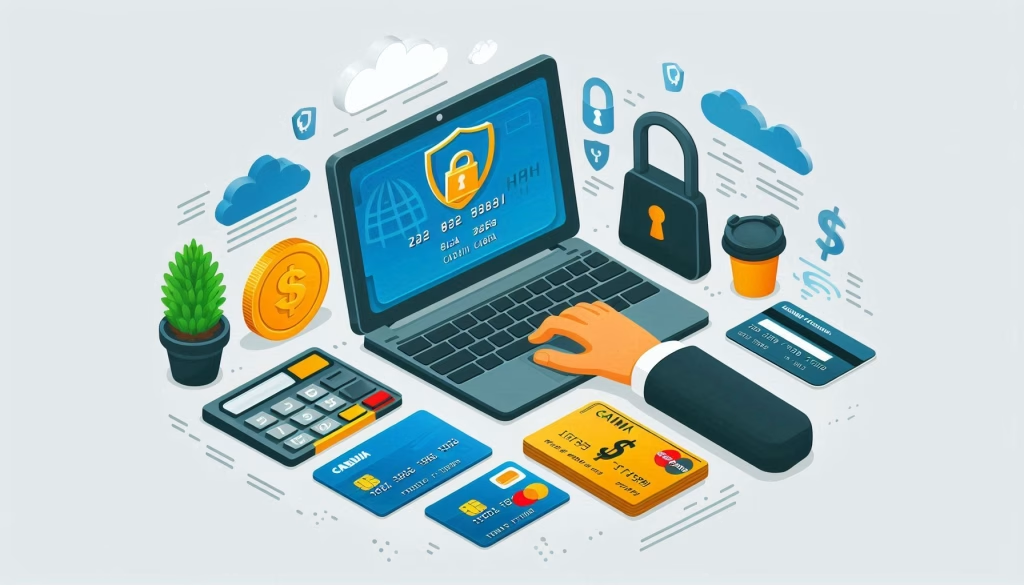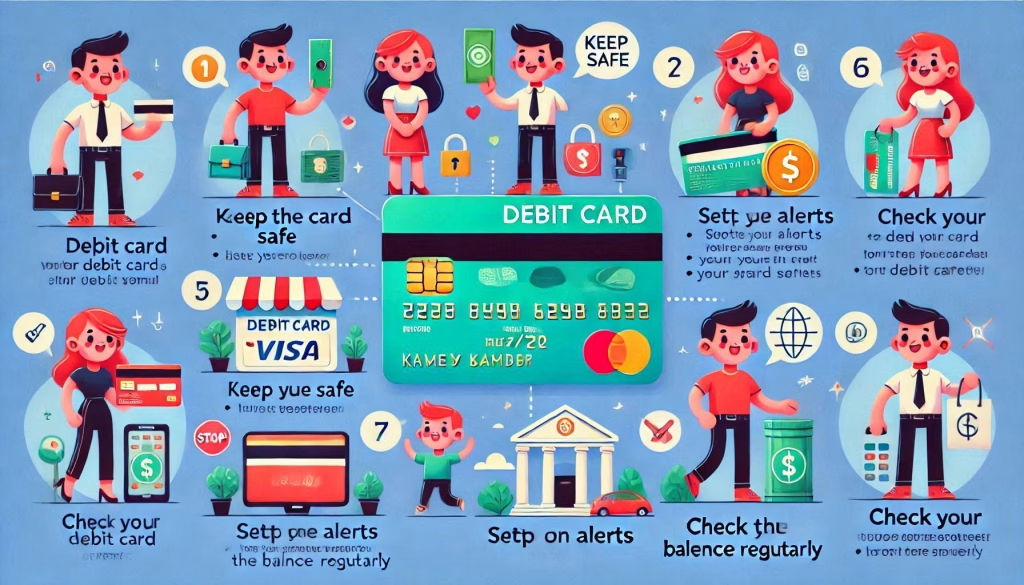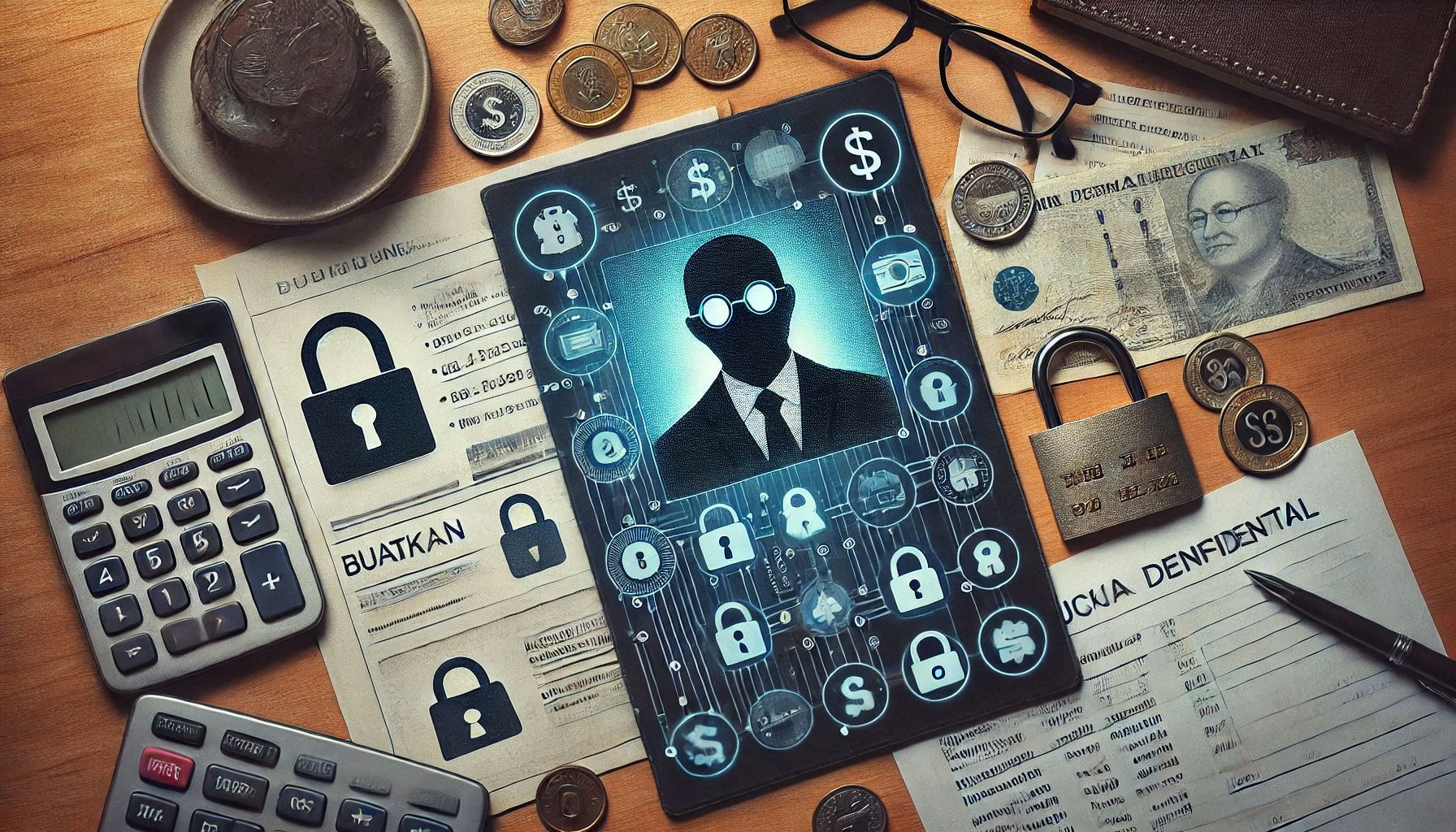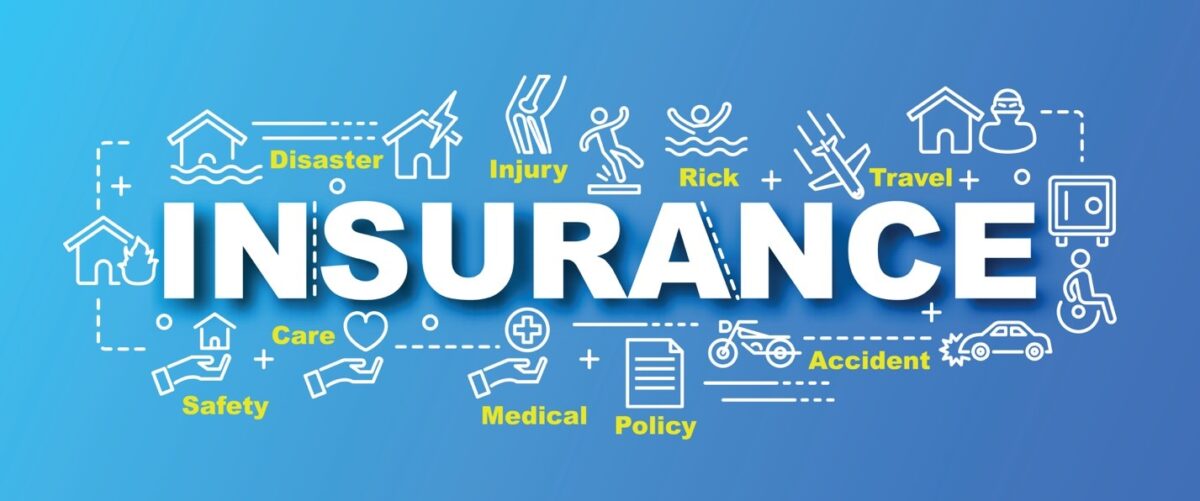Table of Contents
- Overview
- Definition of Phishing and Skimming
- The Following is a List of Data That Needs to be Kept Confidential so That it is Not Hacked by Fraudsters
- Credit Card and Debit Card Piracy Fraud Methods
- Strategies to Safeguard Against Credit/Debit Card Fraud
- Tips for Credit Card Owners
- Preserve the Most Recent Credit Card Transaction Record
- Always Carefully Check Your Credit Card Statements
- Use Strong, Unique Passwords
- Destroy Credit Card Statements Immediately After Payment
- Block Credit Cards Immediately Upon Loss
- Enable Notification Service from the Bank Via Mobile Phone
- Always Remain Vigilant When Conducting Online Transactions With Credit Cards
- It is Crucial to Keep Your CVV and Credit Card PIN Confidential
- Stay Informed About Emerging Threats
- Report Suspicious Activity Immediately
- Tips for Debit Card Owners
- Consider Debit/ATM Card PINs as Confidential Information
- Block the Debit Card Immediately if Lost
- Utilize an ATM Situated in a Secure Location
- Before Inserting Your ATM Card, Inspect The Card Slot for Any Signs of Tampering
- Always Shield the Keypad When Entering Your PIN at the ATM
- Maintain Evidence of Debit Card Transactions
- The Conclusion
Overview
If you possess a credit card, debit card, or ATM card, it’s crucial to use them cautiously. Cybercrime is prevalent these days, and without careful vigilance, you could fall prey to it.
Credit and debit cards have become prevalent tools for daily transactions, often surpassing cash in usage due to their practicality. However, despite the convenience they offer, users engaging in non-cash or cashless transactions are at risk of becoming targets for cybercriminals.
Indeed, the target is often the data or personal information contained in these cards. Should scammers or hackers steal your banking personal data, they could potentially use it to deplete your funds.
Cybercrime tactics, including the theft of personal data, are varied. Perpetrators may use your information to impersonate you and carry out fraudulent online transactions, which can range from banking activities to other financial dealings.
Fundamentally, they will deplete the funds stored in the account or make expensive purchases with a credit card, leaving you responsible for the payment. Cybercrime involving credit and debit cards is commonly referred to as card piracy.
There are various techniques and terminologies associated with the crime of card data theft, including phishing and skimming, which fundamentally involve the theft of credit or debit card information.
To avoid falling victim to credit or debit card hijacking, it’s advisable to familiarize yourself with the modes of fraud and the methods of prevention outlined below.
Definition of Phishing and Skimming

Phishing involves the fraudulent acquisition of sensitive personal details, including names, email addresses, account and credit card numbers, ATM and credit card PINs, one-time passwords (OTPs), and the CVV numbers found on the reverse side of credit cards.
Card skimming, commonly referred to as skimming, is a fraudulent technique that involves installing hidden devices on ATMs or EDC machines. These devices are used to illegally capture and record cardholder data from the magnetic stripe of ATM or credit cards.
Subsequently, the hijacker may use the stolen or compromised data to deplete your bank account or make purchases with your information. This is commonly referred to as scamming, where the perpetrator assumes your identity to carry out banking transactions.
The Following is a List of Data That Needs to be Kept Confidential so That it is Not Hacked by Fraudsters

- Personal data (name, address, email, mobile phone number, parent’s name, date of birth and others)
- Personal identity data
- Bank or mobile banking data (account number, username, password, OTP code (one-time password)
- Debit card data (ATM card number and PIN) and credit card data (number, pin, card type, number on the back of the credit card, and so on)
- E-commerce account data, digital wallets and paylater (username, password and OTP code)
Credit Card and Debit Card Piracy Fraud Methods

Before learning tips and tricks to safeguard your credit card or debit/ATM card from unauthorized access, it’s wise to understand the methods commonly used by card hijackers to steal your data, such as:
Credit Card and Debit Card Piracy Fraud Methods No.1
InsuranceWhat.com
Fraud Through the Internet (Online)
Internet fraud, also known as online fraud, is a type of cybercrime that uses the internet to deceive and take advantage of victims. This encompasses activities such as identity theft, phishing, and various hacking methods aimed at scamming individuals out of money.
In online transactions, such as internet banking and e-commerce shopping, cardholders are not required to physically present their cards (CNP transactions) or provide a signature. Therefore, it is crucial to exercise caution during these transactions.
Websites with insufficient security measures can be exploited by cybercriminals to steal card identity information provided by individuals conducting online transactions through the CNP (Card-Not-Present) facility.
The reason is that with just card numbers, CVV codes, and leaked OTP codes, fraudsters can effortlessly carry out transactions that deplete your account online.
Credit Card and Debit Card Piracy Fraud Methods No.2
InsuranceWhat.com
Fraud Through Phone or Email
This method is quite common and frequently occurs. The hijacker contacts individuals via phone or email, posing as a representative from the bank that issued their credit or debit card.
The modus operandi involves scammers requesting your cooperation to update bank data, claiming the bank system is undergoing updates, alleging issues with your account or credit card, or informing you of winning a large sum of money without a lottery draw.
This situation is undoubtedly a scam or fraud. It’s important to be aware that banks will never request customer data through phone calls, emails, SMS, WhatsApp, direct messages, or postal mail.
Responding to such calls or emails by sharing your banking personal data can put your credit or debit card at risk of being compromised by fraudsters.
Credit Card and Debit Card Piracy Fraud Methods No.3
InsuranceWhat.com
Fraud via Online and Telephone Surveys
In recent years, fraud via online and telephone surveys has become a significant concern. These scams often target unsuspecting individuals, aiming to steal personal information or money. Understanding how these frauds operate and how to protect oneself is crucial.
Pirates may utilize telephone and internet services to create surveys requesting your financial information, such as credit or debit card details. It is crucial to be vigilant against the piracy of credit or debit card data disguised as these surveys.
Credit Card and Debit Card Piracy Fraud Methods No.4
InsuranceWhat.com
Fraudulent Placement of Phishing Tools, Such as Skimming Devices in The Card Slots of ATM Machines, is a Serious Security Concern
ATM machines are frequently targeted by thieves using credit card skimming devices. These criminals hijack cardholder data by placing a small, chip-shaped device in the slot where the ATM card is inserted, which then records the data from the inserted card.
Additionally, hijackers often install a small camera on one side of the ATM to capture your hand entering the PIN code, thereby accessing your personal data and card PIN. It’s crucial to be vigilant and use traditional methods to shield your PIN entry.
Credit Card and Debit Card Piracy Fraud Methods No.5
InsuranceWhat.com
Carding
In this mode, fraudsters buy or sell stolen credit card information on online forums known as carding forums. Fraudsters use stolen card information to make online purchases or withdraw funds from victims’ accounts.
Carding is a form of cybercrime that involves the unauthorized use of credit or debit card information to make fraudulent purchases or transactions. This illegal activity has become increasingly sophisticated, posing significant risksRisk Risk is a loss that occurs to the insured individual or object. Various bad possibilities could happen to someone. to individuals and businesses alike.
Credit Card and Debit Card Piracy Fraud Methods No.6
InsuranceWhat.com
Fake Apps and Websites
In the fake apps scheme, scammers develop counterfeit mobile applications that mimic legitimate banking or credit card company apps. Once the victim inputs their card details into the app, the scammer can retrieve the data. Similarly, in the fake websites scheme, scammers establish fraudulent websites that resemble official ones to capture card information as soon as the victim submits it.
Strategies to Safeguard Against Credit/Debit Card Fraud

Credit and debit card fraud is a growing concern in today’s digital age. With the increasing reliance on electronic transactions, it’s crucial to adopt effective strategies to protect your financial information from fraudsters.
Here are some strategies to safeguard your credit card or debit/ATM card from being compromised and misused. Consider these methods for secure transactions with your debit or credit card:
Tips for Credit Card Owners

Credit card ownership comes with significant responsibility. Here are some tips to manage your credit card effectively: Choose the right card for your needs, keep your card details secure, control your spending, regularly check your statements, and understand the timing of payments. It’s also wise to pay off your balance in full each month, avoid late payments, and be aware of any fees. Additionally, monitor your balance to spend within your means and improve your credit score by using your card wisely.
If you possess a credit card, it’s crucial to be vigilant about the following aspects to prevent any attempts at compromising your card’s security:
Strategies to Safeguard Against Credit/Debit Card Fraud No.1
InsuranceWhat.com
Preserve the Most Recent Credit Card Transaction Record
Each time you conduct a transaction with a credit card, you will receive a transaction receipt that should be retained and stored securely, away from easy access by others.
If you receive a bond via email, you should download and securely save it. This ensures that if an unsuitable transaction is detected, you can promptly contact the bank for clarification. Once the bill is paid in full, you may then destroy the bond or proof of payment, or delete it from your email.
Strategies to Safeguard Against Credit/Debit Card Fraud No.2
InsuranceWhat.com
Always Carefully Check Your Credit Card Statements
Regularly checking your bank and credit card statements is one of the most effective ways to detect unauthorized transactions early. Set up alerts for any unusual activity, such as large purchases or transactions in unfamiliar locations. Many banks and credit card companies offer mobile apps that allow you to monitor your accounts in real-time.
The reason for meticulously reviewing credit card statements each month is to ensure that if there is any payment or purchase transaction you did not authorize, you can promptly contact the issuing bank to request an explanation.
Strategies to Safeguard Against Credit/Debit Card Fraud No.3
InsuranceWhat.com
Use Strong, Unique Passwords
Ensure that your online banking and shopping accounts are protected with strong, unique passwords. Avoid using easily guessable information such as birthdays or common words. Consider using a password manager to generate and store complex passwords securely.
Strategies to Safeguard Against Credit/Debit Card Fraud No.4
InsuranceWhat.com
Destroy Credit Card Statements Immediately After Payment
Once you’ve paid off the monthly statement on your credit card, it’s advisable to promptly destroy the bill. This is to prevent any malicious individuals from finding and misusing the card number and other personal information detailed on the statement.
Strategies to Safeguard Against Credit/Debit Card Fraud No.5
InsuranceWhat.com
Block Credit Cards Immediately Upon Loss
Should you lose your credit card, it is imperative to contact the issuing bank without delay and request a block on the card. Failing to promptly secure the lost credit card puts it at riskRisk Risk is a loss that occurs to the insured individual or object. Various bad possibilities could happen to someone. of unauthorized use by unscrupulous individuals.
Keep your credit and debit cards in a safe place and never leave them unattended. If your card is lost or stolen, report it to your bank immediately to prevent unauthorized use. Consider using RFID-blocking wallets to protect your cards from being scanned by unauthorized devices.
Strategies to Safeguard Against Credit/Debit Card Fraud No.6
InsuranceWhat.com
Enable Notification Service from the Bank Via Mobile Phone
To enable bank notification services on your mobile phone, you can typically follow these steps: Log into your banking app, navigate to the settings or profile section, select ‘Notifications’ or ‘Notification Settings’, and then switch on the toggle for ‘Allow Notifications’ or ‘Push Notifications’. For specific instructions, refer to your bank’s app guidance or help section.
To continuously monitor your credit card transaction activity, it’s advisable to enable the transaction notification service offered by your credit card’s issuing bank on your mobile phone.
Whenever a transaction is made with a credit card, the bank sends an SMS notification detailing the transaction. It’s important to promptly update your mobile phone number with the bank if you change it, by reaching out to the bank that issued your credit card.
Strategies to Safeguard Against Credit/Debit Card Fraud No.7
InsuranceWhat.com
Always Remain Vigilant When Conducting Online Transactions With Credit Cards
When conducting online shopping transactions or other types of transactions with a credit card, stores or online businesses typically require you to provide additional data and information to verify that the credit card indeed belongs to you.
Always verify the correctness of the website address and confirm the legitimacy of the online shopping application or site to avoid falling prey to credit card fraud. It is not advisable to use a credit card on online shopping sites that appear unreliable due to security concerns.
Strategies to Safeguard Against Credit/Debit Card Fraud No.8
InsuranceWhat.com
It is Crucial to Keep Your CVV and Credit Card PIN Confidential
Credit card owners are legally required to protect their personal data. It’s crucial to keep sensitive information like the CVV, PIN, card expiration date, ID card number, and mother’s maiden name confidential. Above all, never disclose your credit card PIN or CVV to anyone.
Never share your card details over the phone or email unless you are certain of the recipient’s identity. Be wary of phishing scams that attempt to trick you into revealing your card information. Always verify the legitimacy of the request before providing any sensitive information.
Strategies to Safeguard Against Credit/Debit Card Fraud No.9
InsuranceWhat.com
Stay Informed About Emerging Threats
Cybercriminals are constantly developing new methods to steal card information. Stay informed about the latest fraud trends and tactics by subscribing to security newsletters or following trusted sources. This knowledge can help you recognize and avoid potential threats.
Strategies to Safeguard Against Credit/Debit Card Fraud No.10
InsuranceWhat.com
Report Suspicious Activity Immediately
If you notice any suspicious activity on your account, report it to your bank or credit card company immediately. Prompt reporting can help prevent further unauthorized transactions and increase the chances of recovering lost funds.
Tips for Debit Card Owners

Debit cards are a convenient and widely used financial tool, allowing you to access your funds directly from your bank account for purchases and withdrawals. However, with convenience comes the need for caution to protect your financial information and avoid potential fraud. Here are some essential tips for debit card owners to ensure safe and smart usage.
Tips for Debit Card Owners No.1
InsuranceWhat.com
Consider Debit/ATM Card PINs as Confidential Information
To enhance security, it’s advisable to change your debit card PIN regularly, at least twice a year. More crucially, always keep your PIN confidential. If you find it difficult to remember and need to write it down, store the note with your PIN code in a location separate from your debit card or ATM card to prevent easy access by others.
Tips for Debit Card Owners No.2
InsuranceWhat.com
Block the Debit Card Immediately if Lost
Similar to credit cards, if your debit or ATM card is lost, it’s crucial to promptly notify the issuing bank to ensure the card is blocked permanently. Following this, you can visit the bank’s local branch to arrange for a replacement debit or ATM card.
Tips for Debit Card Owners No.3
InsuranceWhat.com
Utilize an ATM Situated in a Secure Location
When using an Automated Teller Machine (ATM) for cash withdrawals or other transactions, it’s advisable to select an ATM situated in a secure location, preferably close to the bank’s branch office that issued your card or where security personnel are present. Should any issues arise, promptly notify the bank or the security staff.
Tips for Debit Card Owners No.4
InsuranceWhat.com
Before Inserting Your ATM Card, Inspect The Card Slot for Any Signs of Tampering
The technique involves shaking the component to ensure the ATM card slot is securely in place. If a recording chip has been attached by a hijacker, it’s typically affixed with just glue or tape, making it easy to detach. Should you find the ATM suspicious, promptly report it to the authorities or opt for a more trustworthy ATM machine.
Tips for Debit Card Owners No.5
InsuranceWhat.com
Always Shield the Keypad When Entering Your PIN at the ATM
It’s important to be vigilant about hidden cameras that may be installed by thieves to capture your PIN. Always shield your hand when typing in your PIN code to protect your financial information.
Tips for Debit Card Owners No.6
InsuranceWhat.com
Maintain Evidence of Debit Card Transactions
Maintaining proof of your debit/ATM card transactions allows you to reconcile them with the entries in your passbook. Should there be any discrepancies, you can promptly report them to the bank for further investigation.
The Conclusion
Ensure Proper Management of Personal Data
By heeding the tips provided, you can significantly lower the risk of your credit or debit card being compromised and misused. Exercising caution and staying vigilant when using your cards will undoubtedly make your transactions smoother. With these measures, your credit and debit cards should be better protected against fraud.
Protecting your credit and debit card information requires vigilance and proactive measures. By implementing these strategies, you can significantly reduce the risk of falling victim to card fraud. Regularly monitoring your accounts, using strong passwords, enabling two-factor authentication, and staying informed about emerging threats are essential steps in safeguarding your financial information. Remember, the key to preventing fraud is to stay one step ahead of the fraudsters.
Do you think you have other ideas about How to Keep Your Credit and Debit Cards: Safe from Hackers? You can comment and share your thoughts below, or discuss more in the InsuranceWhat Forum. Also, read more articles about GLOBAL INSURANCE or other interesting insurance topic articles only at InsuranceWhat.com.




